Esperance artificial reef build begins
ESPERANCE EXPRESS
Jesinta Burton
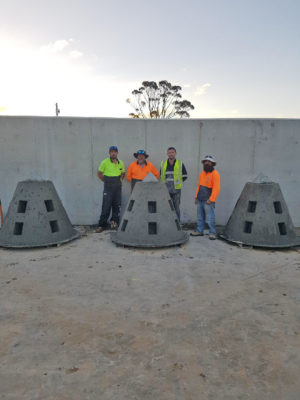 The long awaited Esperance Artificial Reef development is another step closer with construction having officially commenced on Wednesday, June 6.
The long awaited Esperance Artificial Reef development is another step closer with construction having officially commenced on Wednesday, June 6.
Local volunteers from the Esperance Deep Sea Angling Club will partake in a number of ‘busy bee’s’ throughout the month of June in order to build the artificial reef.
The $600,000 artificial reef development has been several years in the making.
Related stories:
The development came to fruition in December 2016, after it was announced it would receive $300,000 in funding from the Recreational Fishing Initiatives Fund.
In March last year, the project doubled in size after the Goldfields Esperance Development Commission matched the existing funding.
The local vision, which has now developed into a 150 tonne project, was designed to rectify the substantial loss of fishing access in the region due to geographical and environmental factors.
South East Coast Recreational Fishing Council chairman Graham Cooper said it was a special feeling to know that the reef build was something that both members and their children would be able to enjoy.
“It’s great that we could keep the work and the reef materials sourced locally,” he said.
“I can’t wait to catch a queenie or a sambo on a reef that the Esperance fishing community built with their own hands.”
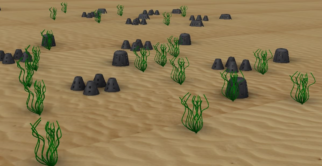 Recfishwest Research officer James Florisson said the reef design was configured specifically for local species and had been thoughtfully designed by engineers, marine biologists and ecologists.
Recfishwest Research officer James Florisson said the reef design was configured specifically for local species and had been thoughtfully designed by engineers, marine biologists and ecologists.
Mr Florisson said the reef configuration would create a productive ecosystem for a variety of different species of fish.
“It will provide a home for species such as Queen Snapper, Breaksea Cod, Skippy, Harlequin and Pink Snapper,” he said.
“This could not have been done without the support of the community and the volunteers who have worked tirelessly to make this happen.”
The reef was built and will be installed by artificial reef experts at global marine foundation Subcon.
It is expected the reef will be deployed in September this year.
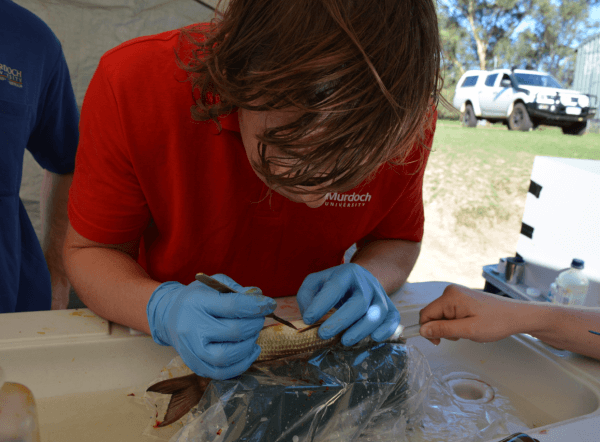 Bream are Capable of Travelling….a lot!
Bream are Capable of Travelling….a lot!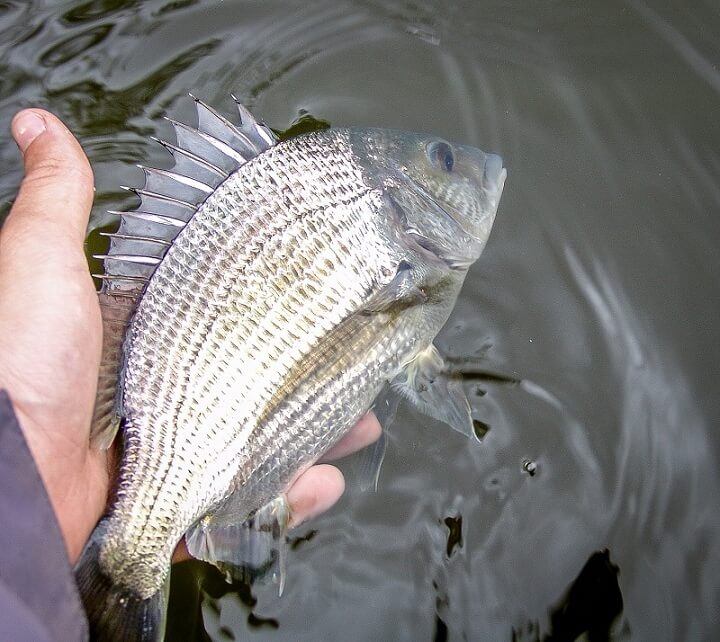
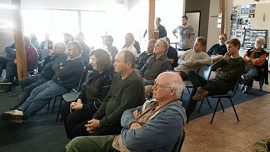 The knowledge local fishers have about changes in the quality of fishing in the area provided a rare insight into how big an impact changes in fish habitat have actually had on fishing. An important part of discussions was led by Western Angler editor Scott Coghlan who talked with local veteran Jim Allan and bream young gun Callum Dowell on their perspectives on changes in the area. Both Jim and Callum had noticed significant changes in the quality of fishing and fish habitat over the years. Jim told tales about some epic bream fishing that used to be available around Albany in years gone by including bream that averaged over 1 kg each, with some pushing 2 kg’s while Callum said at its best it wasn’t unusual to catch over 100 fish in a session! Jim suggested that in terms of habitat loss, one of the key changes that had led to a reduction in the quality of fishing was the huge loss of seagrass in Oyster Harbour, while decreases in rainfall were also hurting the system. Callum had noticed similar changes and noted that on some of the flats he fished the sand had changed over the years from being hard and course to soft mud.
The knowledge local fishers have about changes in the quality of fishing in the area provided a rare insight into how big an impact changes in fish habitat have actually had on fishing. An important part of discussions was led by Western Angler editor Scott Coghlan who talked with local veteran Jim Allan and bream young gun Callum Dowell on their perspectives on changes in the area. Both Jim and Callum had noticed significant changes in the quality of fishing and fish habitat over the years. Jim told tales about some epic bream fishing that used to be available around Albany in years gone by including bream that averaged over 1 kg each, with some pushing 2 kg’s while Callum said at its best it wasn’t unusual to catch over 100 fish in a session! Jim suggested that in terms of habitat loss, one of the key changes that had led to a reduction in the quality of fishing was the huge loss of seagrass in Oyster Harbour, while decreases in rainfall were also hurting the system. Callum had noticed similar changes and noted that on some of the flats he fished the sand had changed over the years from being hard and course to soft mud.
 The addition of artificial reefs has been a great change to the WA fishing landscape in the last three years. Quality fish started appearing on the first two reefs in Georgaphe Bay almost instantly, and the new installation off Mandurah should be the same. Prime recreational fishing species like Pink Snapper, Samson Fish, Dhufish, Skippy and Yellowtail Kingfish love the new structures and take up residence around them. Not only do the reefs improve fishing in the area where they are deployed, they also increase the productivity of the local fishery itself. However, recreational fishers are also finding they need to tailor their tactics to suit these purpose-built structures.
The addition of artificial reefs has been a great change to the WA fishing landscape in the last three years. Quality fish started appearing on the first two reefs in Georgaphe Bay almost instantly, and the new installation off Mandurah should be the same. Prime recreational fishing species like Pink Snapper, Samson Fish, Dhufish, Skippy and Yellowtail Kingfish love the new structures and take up residence around them. Not only do the reefs improve fishing in the area where they are deployed, they also increase the productivity of the local fishery itself. However, recreational fishers are also finding they need to tailor their tactics to suit these purpose-built structures.
 These reefs, which were almost completely removed over 100 years ago by dredging, provided complex habitat for fish as well as filtering water and capturing nutrients. However, like in many bays and estuaries across Australia, Oyster Harbour’s abundant oyster reefs have been lost. This project, which is partially funded by fishing licence fees through the Recreational Fishing Initiatives Fund, aims to identify and restore oyster reefs to help to improve recreational fishing, biodiversity and water quality in Oyster Harbour.
These reefs, which were almost completely removed over 100 years ago by dredging, provided complex habitat for fish as well as filtering water and capturing nutrients. However, like in many bays and estuaries across Australia, Oyster Harbour’s abundant oyster reefs have been lost. This project, which is partially funded by fishing licence fees through the Recreational Fishing Initiatives Fund, aims to identify and restore oyster reefs to help to improve recreational fishing, biodiversity and water quality in Oyster Harbour.